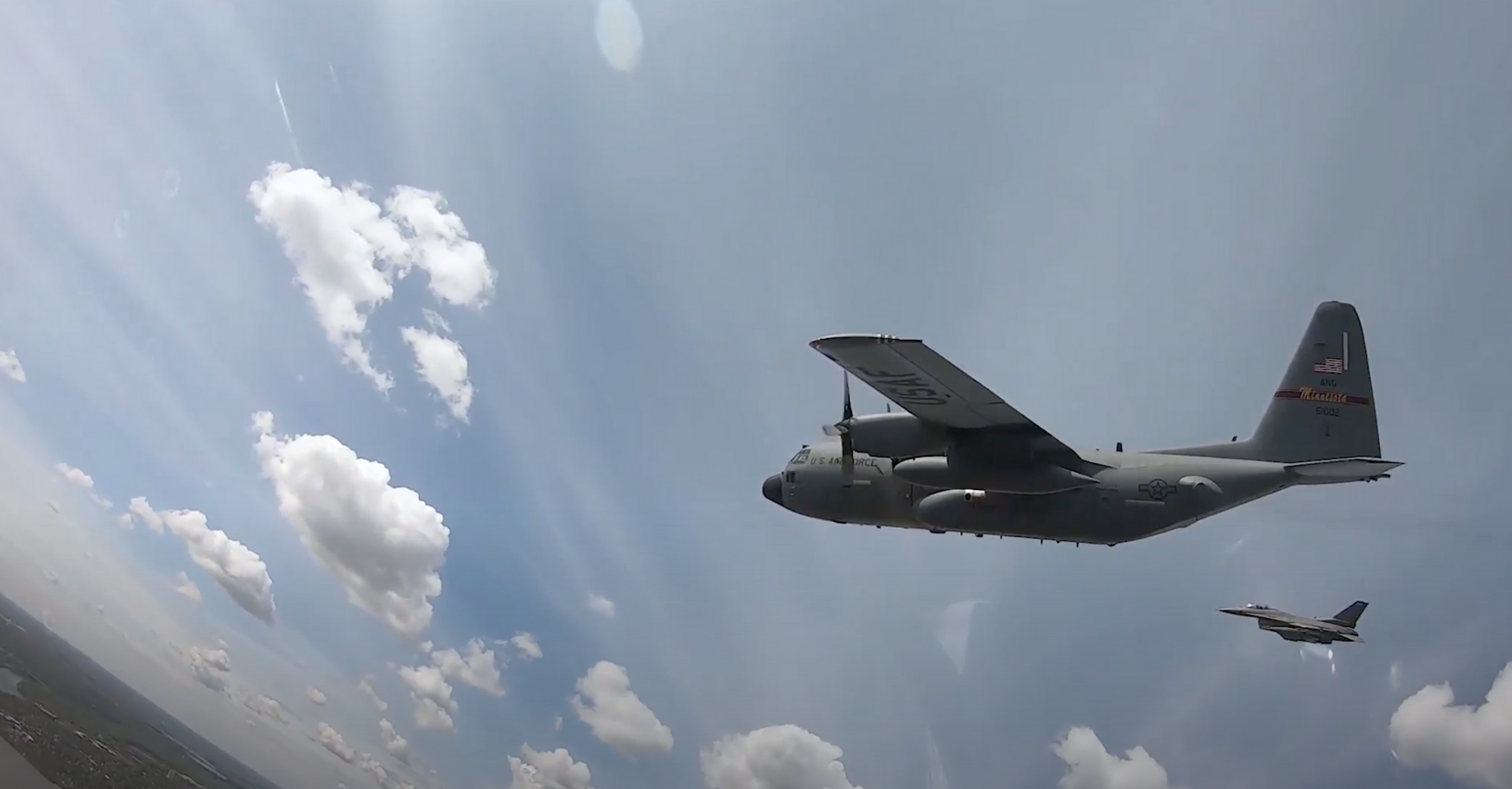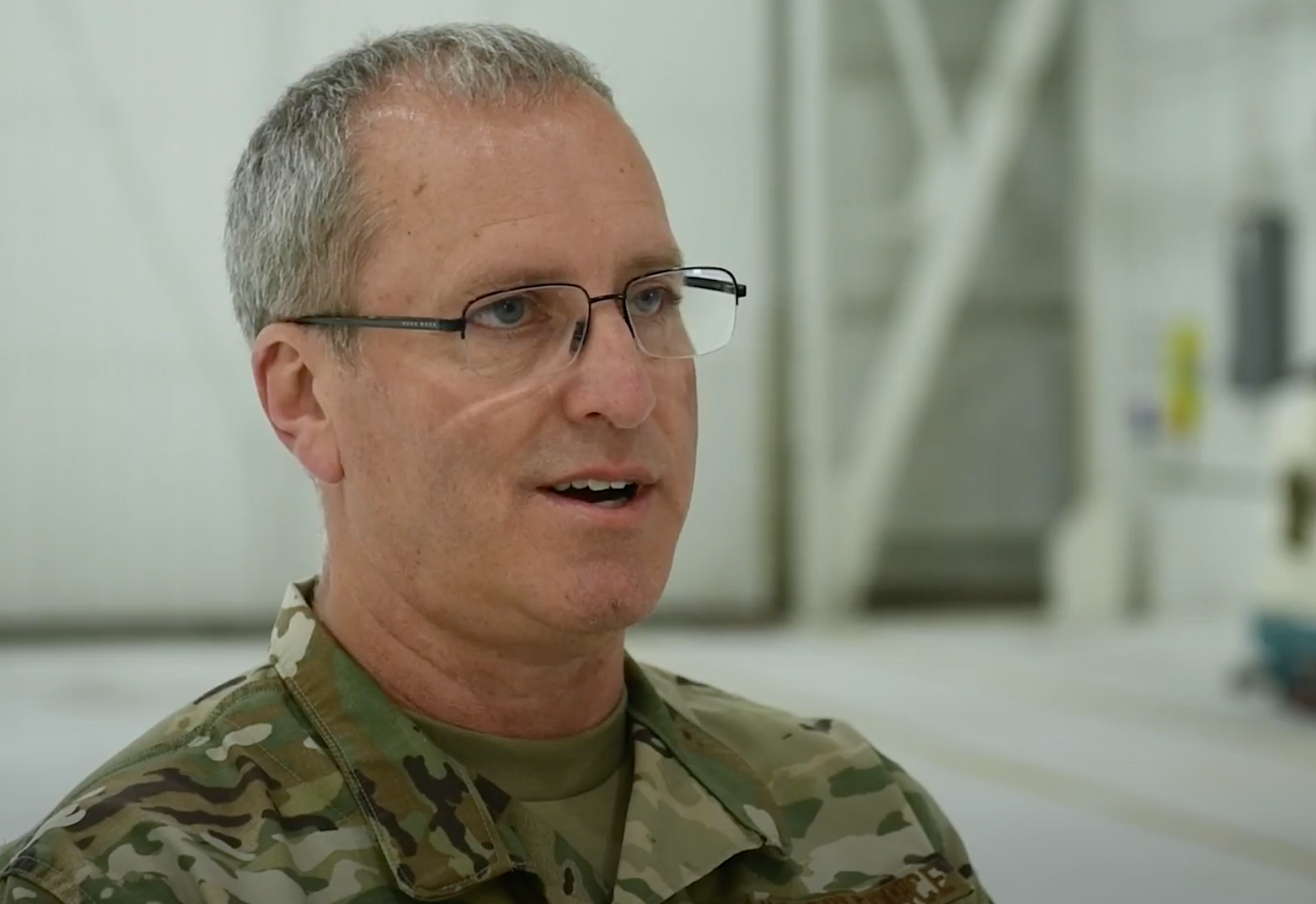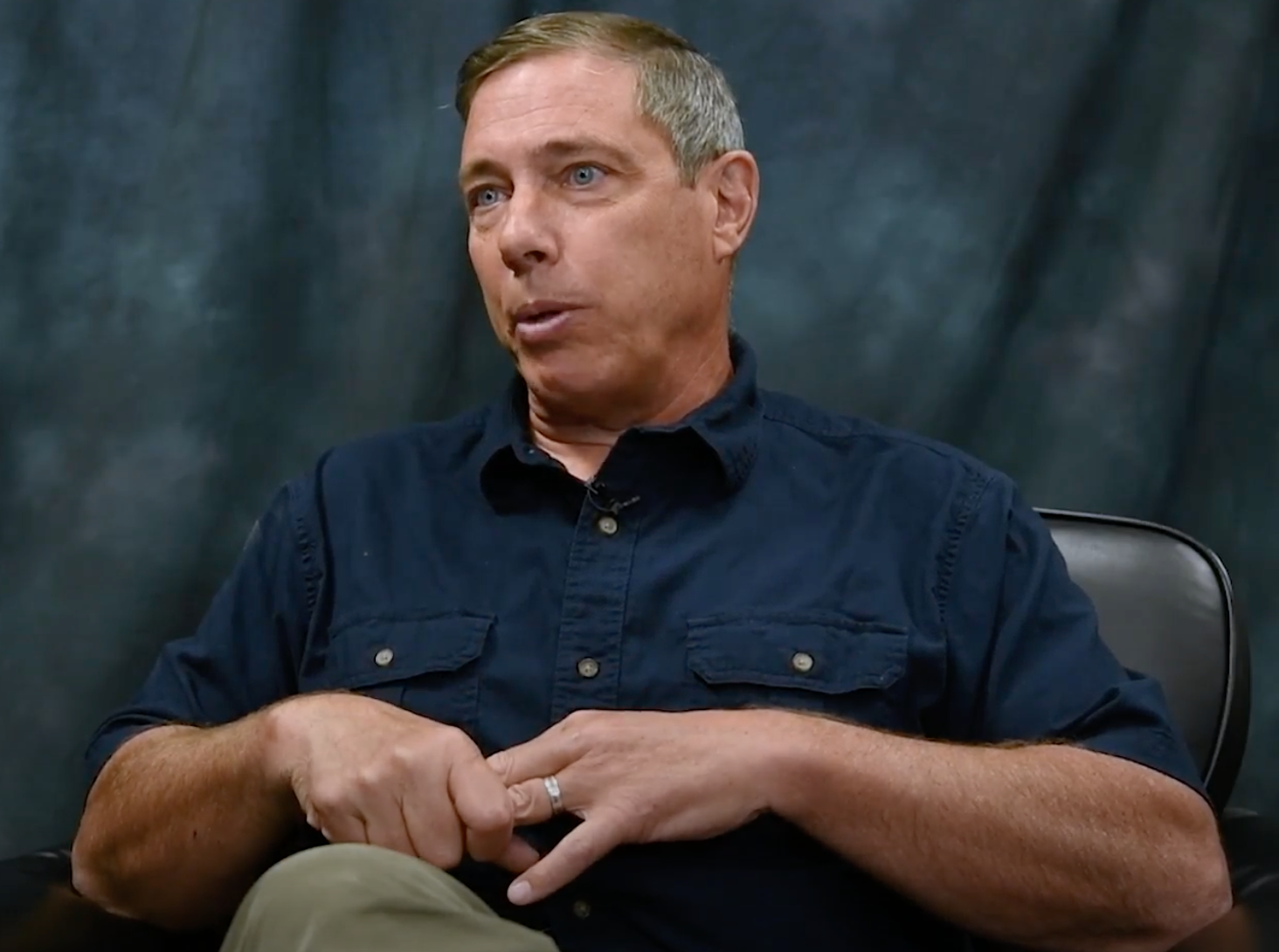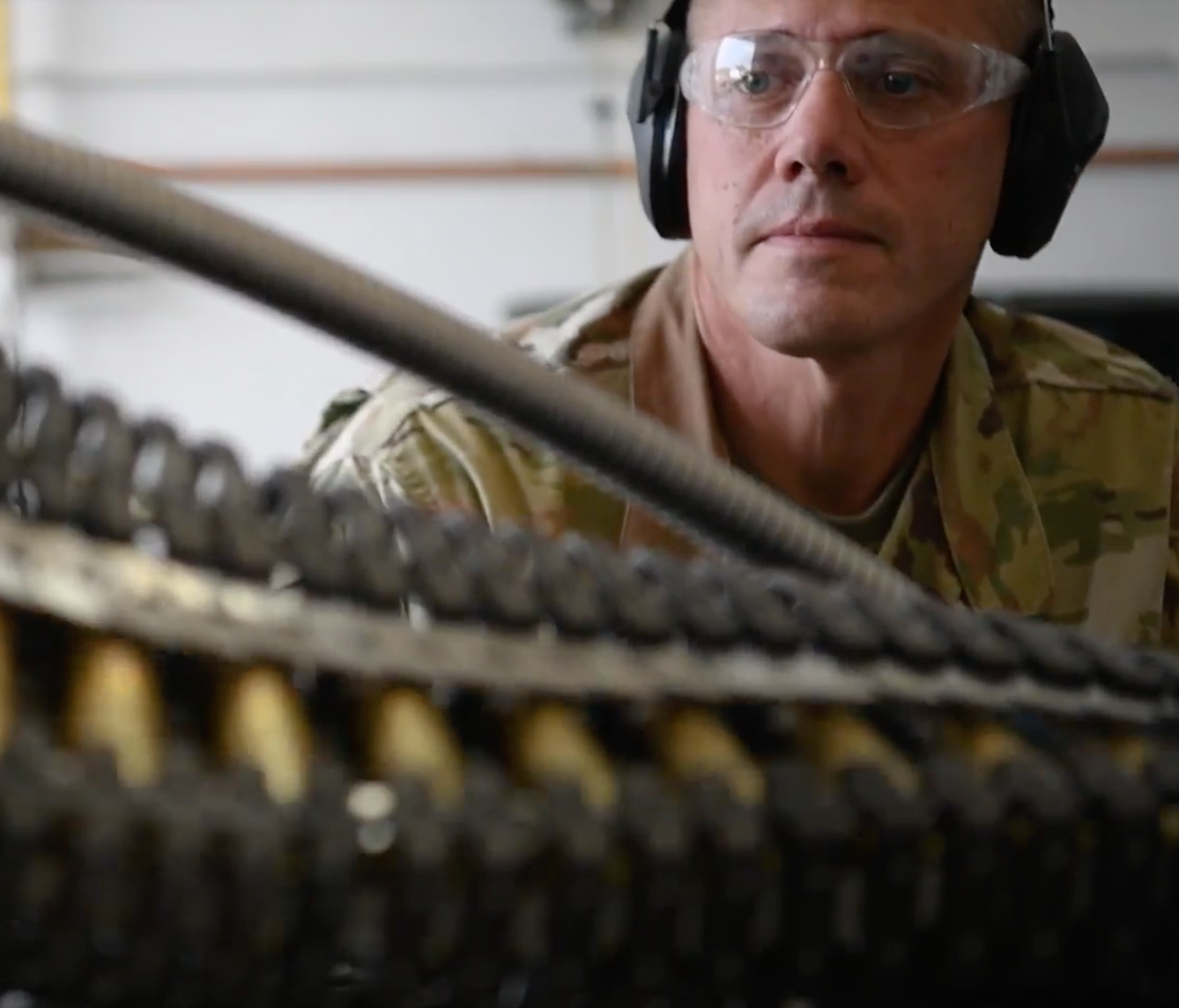Reflections on 9/11: "I look at it as my Pearl Harbor."
Minnesota soldiers share firsthand accounts of the response to the attacks on September 11, 2001.

I am of an age that I can remember precisely where I was when I learned of an airplane flying into the World Trade Center in New York City.
The specifics are vivid. I was on the entrance ramp to go from Highway 36 East to Interstate 35E South, driving into work and listening to the news. The public relations firm I was working with had recently placed some spots on the station for a client and these spots were to be run during a news break. I wanted to hear how they sounded.
I have no memory of hearing the spots, but I do remember hearing the sounds of confusion. The news reporter was working to piece fragmented information together. They were reading a report; they had not yet seen footage. I remember the newscasters saying it was unclear what sort of aircraft struck one of the most iconic office buildings in the city.
A few moments later, they said they could confirm that the plane that struck the tower was a commercial airliner. The story they were sharing was confusing, but with this added information, it became scary. When the Saint Paul skyline came into view, I looked at the 30- and 40-story skyscrapers, and tried to imagine what buildings twice, nearly three times, as tall would look like if a plane had crashed into them.
At this point in the morning, the word "terrorism" had yet to be used. That would change.
Details Unfolded as the Country Watched
When I got to work, the story was becoming clearer - and scarier. I called my wife, tried to reach my parents, stood in the restaurant next to the office. The restaurant was closed, but a group of my colleagues and I were let in to watch coverage on the television sitting on a shelf behind the bar.
My story is neither remarkable, nor unique. If you are of a certain age, you remember where you were. It’s like listening to my parents talk about where they were when they learned that President John F. Kennedy was assassinated.
The 20 anniversary of the attacks pushes those stories and remembrances of 9/11 to the forefront. A documentary produced by the Minnesota National Guard Public Affairs Office is shedding light on the reaction of Minnesota’s air and ground forces in the minutes, hours, days and weeks following the attacks.
I spoke with the film’s director, Staff Sargent Sydney Mariette, to learn about her reactions to the stories she heard while interviewing the veterans appearing in the film.

The first question I asked was what she remembered from the morning of 9/11. In 2001, Mariette was an 8-year-old living in Saint Paul. She came downstairs to the kitchen. She remembers sunlight streaming through the windows, then she saw her mom crying. “That is a vivid memory, because it doesn’t happen a lot," Mariette recalls.
“In terms of making this film," Mariette continues, “I was a bit of a blank slate.” Without the reference points older filmmakers or more experienced soldiers would have, she did not have to worry about skipping past important points that are assumed to be common knowledge. Some of the 16 people Mariette interviewed are still in uniform, though the majority have retired from the military. All of them are 20 years older than they were on that Tuesday morning in September, but they can easily recall details of the responses they were asked to take.
While Mariette called Saint Paul home in 2001, she spent most of her childhood in western Wisconsin. She was homeschooled during her K-12 education years, and went to both UW Oshkosh and UW River Falls. As an undergrad at UWRF, she developed an interest and passion for digital film production. At about that same time, she joined the National Guard - as a way to pay for her interest and passion for digital film production. Last year, seven years into her military career, she was deployed to the Middle East, returning home in October to start the production of her film.
SGT Mariette set out to tell the stories of the men and women who, on September 11, 2001, woke up and drove in to their National Guard jobs. Much like I did that morning, they were completely unaware of how the day would unfold. Unlike me, the soldiers would end up preparing to protect a country very much on edge.
The stories Sydney gathered in this 26-minute film are ones that, I would be willing to bet, most Minnesotans have never heard.
Three Stories Stand Out in the Film

Senior Master Sargent Corey Berg, a crew member of Gopher 6, a C-130 aircraft, was one of the first to witness the crash sites at both the Pentagon and in Pennsylvania. He shares his memories of hearing air traffic control chatter asking for help to identify "a non-responsive," a low-flying commercial aircraft. After the cargo plane Berg was in orbited the Washington, D.C. crash site, they were diverted toward the Pennsylvania field where the crew reported seeing a plume of smoke rising in the sky. Berg recalls witnessing the historic events and describes the experience poignantly: “I look at it as my Pearl Harbor.”

One of the swift aftershocks of the attacks involved the grounding of all aircraft, except for military planes. Depending on where you live in the Twin Cities, the din (or roar) of a passenger plane is omnipresent. I have a distinct memory of how quiet it was outside, without traffic coming into or leaving MSP. Frank Stokes was the vice commander of the 148 Fighter Wing out of Duluth. He ended up being part of a team that accounted for 428 flights intended to patrol airspace and accompany Air Force One as the President traveled in subsequent weeks and months. He shares an account of how unusual it was to take flight when there were no other planes sharing the radar screen with his fighter jet.

On September 10, the jets of the 148 were put away as they always were. Live ammunition was not stored in their guns; their missiles were unarmed. Charlie Zorbitz, the munitions supervisor for the 148 Fighter Wing spent September 11 arming jets and preparing for the worst. He and a crew of five others spent nearly 20 hours working to get planes ready to scramble. The planes would stay ready for months. The 148 was ordered to keep jets on alert, meaning they had to be ready to go up, fully armed, in five minutes or less. This was a new operation. It required the hangar to be operated much like a fire station, one in which airmen would need to live in the hangar, ready to fly at any time. But before they could do this, they would need to outfit living quarters out of a space where none existed.
Seeing Minnesota Remembers 9/11 provided me with reflections I think of regularly. When I go to work in the morning, I still take the same exit ramp onto the same Saint Paul-bound interstate and the same skyline appears as I approach downtown. For everything that has stayed the same since September 11, 2001, a lot has changed. From the benign: The restaurant I watched the news in on that morning has closed. To the obvious: I am 20 years older. To the intense and the sad: I have lived in a country that has been at war for a generation, and my children know the United States to be a country at constant war. It feels like taking a moment to remember and reflect - not just on the events of 20 years ago, but on the myriad recent tragedies faced by a nation - is a proper way to honor the 2,977 lives lost and the countless lives changed forever on 9/11/01.

This story is made possible by the Arts and Cultural Heritage Fund and the citizens of Minnesota.
The ripple effects of war are intense and wide-ranging, impacting soldiers, medical personnel, family members and refugees. Discover their stories in the collection The Call to Server: Stories of Sacrifice, War and the Way Home.
Wonder what it’s really like for the family of a deployed soldier? One woman shares her firsthand perspective on juggling motherhood, household tasks, a brutal winter and broken appliances while her husband is deployed overseas.
Writer Doug Bradley is both a Vietnam War veteran and also considers himself “part of the Woodstock generation.” In “Caught in the Devil’s Bargain,” he draws parallels between the war and the concert in an effort to show that “like so much about the 1960s, the Woodstock-Vietnam dialectic is a lot more nuanced, much more convoluted… A touch of grey if you will.”
